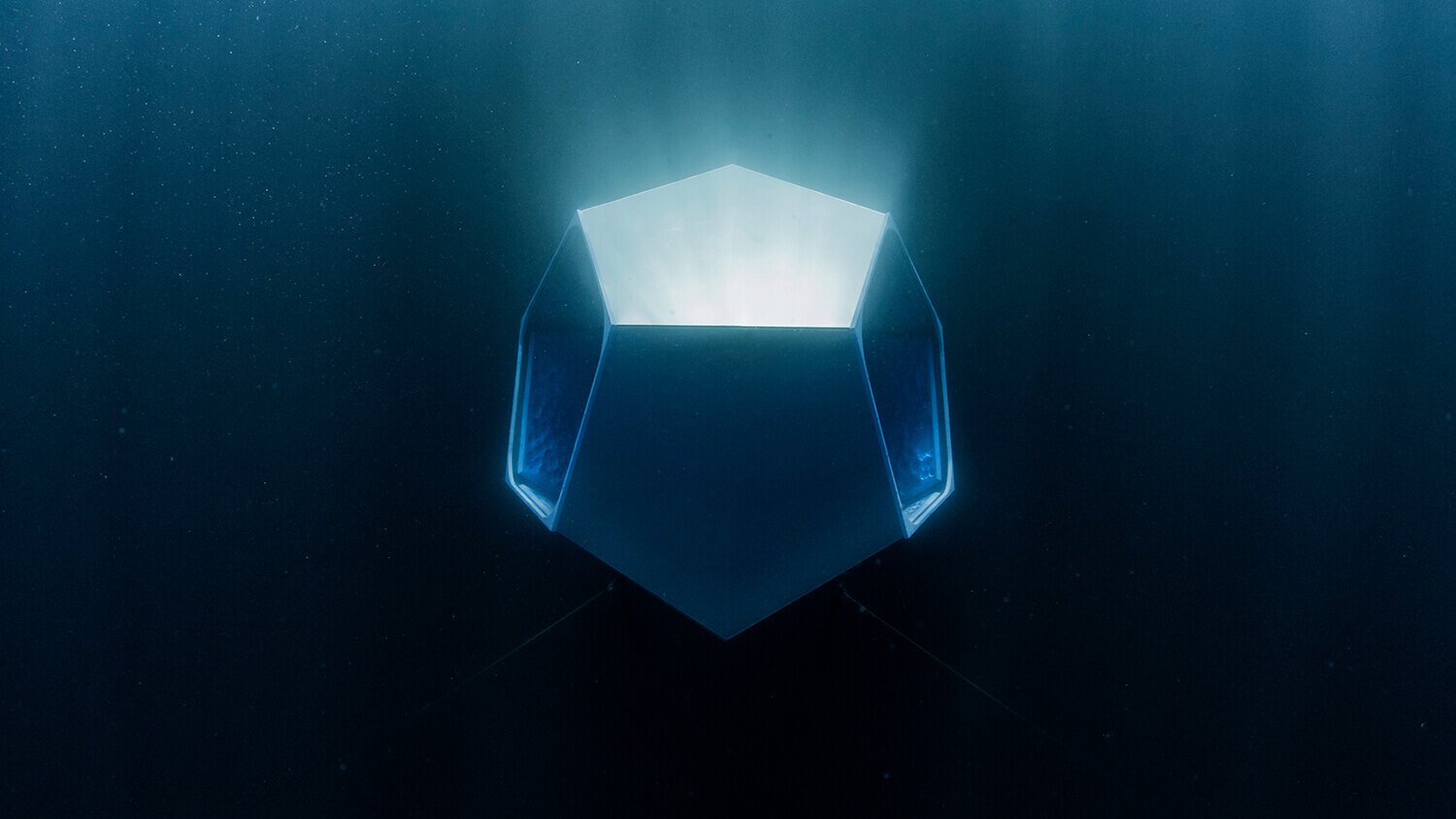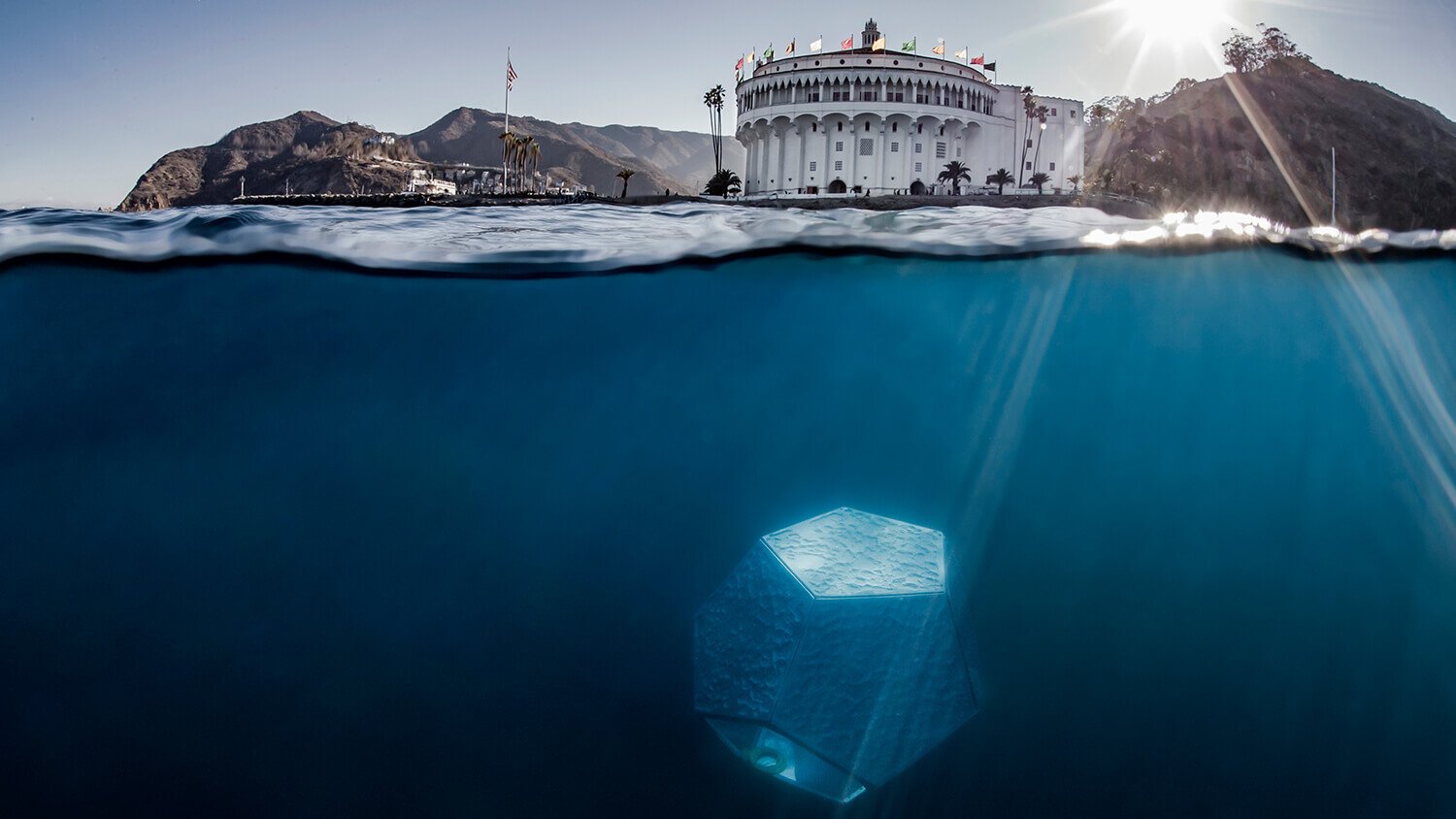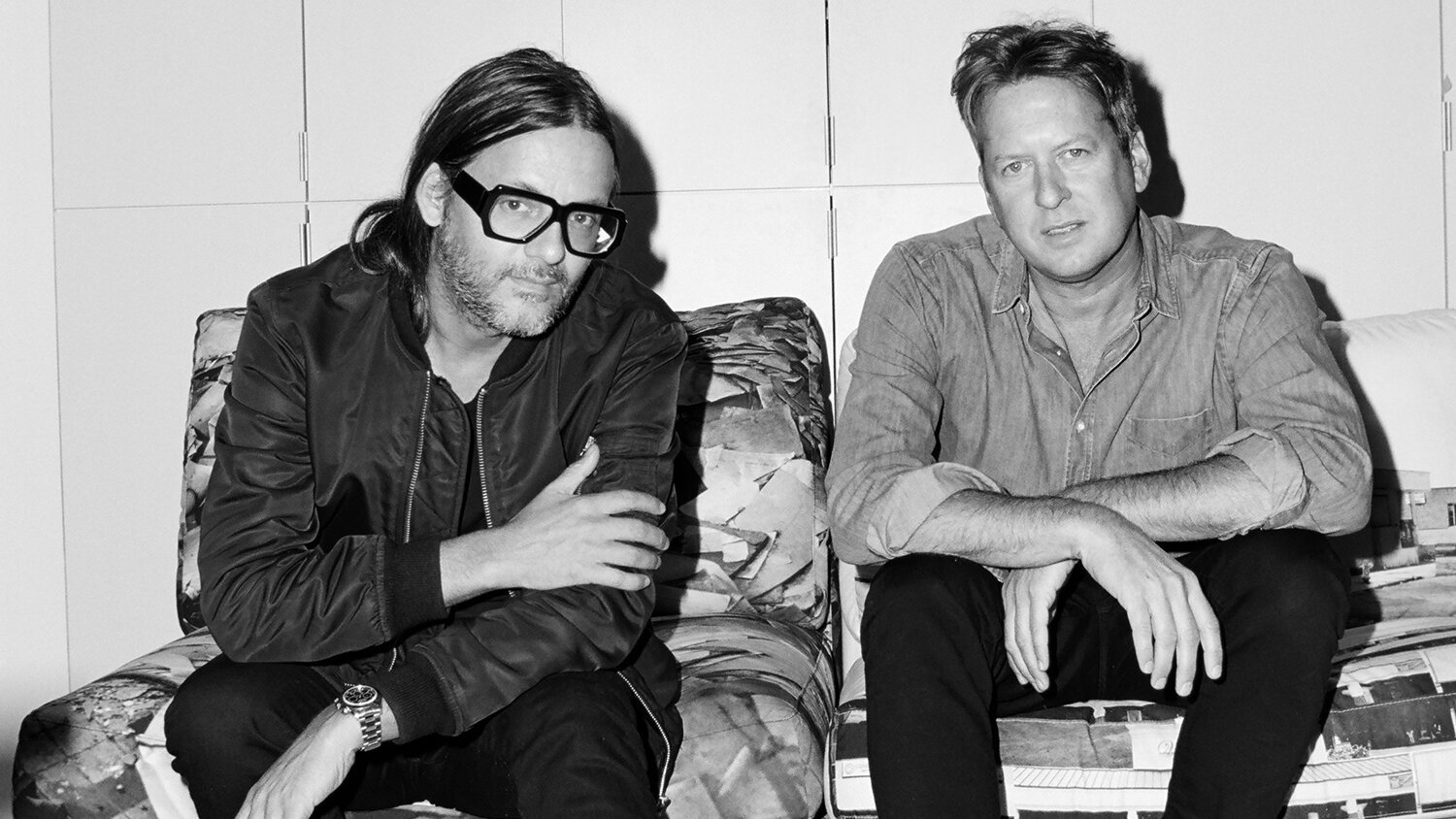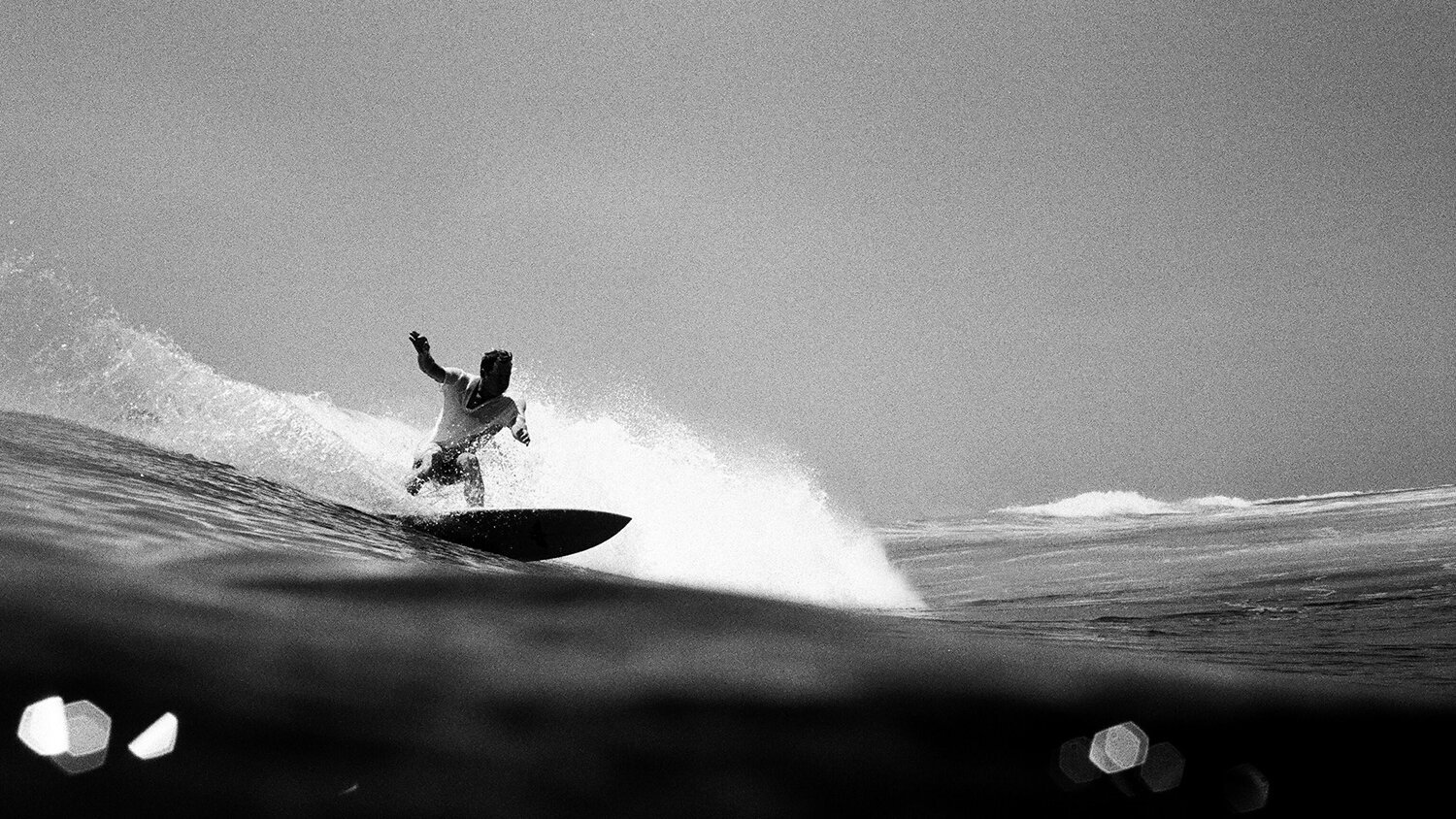The Network: Doug Aitken
Artist • Filmmaker • Surfer • Creator of Underwater Pavilions
Doug Aitken is an American artist and filmmaker whose work defies the definitions of genre and transports to a place where time, space, and memory are fluid concepts. His works range from photography, print media, sculpture, and architectural interventions, to narrative films, sound, single and multi-channel video works, installations, and live performance. Doug has been featured in numerous solo and group exhibitions around the world, in such institutions as the Whitney Museum of American Art, The Museum of Modern Art, the Vienna Secession, the Serpentine Gallery in London and the Centre Georges Pompidou in Paris.
Underwater Pavilions, his collaboration with Parley, presented by the Museum of Contemporary Art, Los Angeles, consists of three large-scale sculptures installed beneath the ocean’s surface. The works were first tethered to the seabed off Catalina Island in California. Experienced through diving, snorkeling, swimming, and video installations, the immersive artwork invites each individual to craft a personal narrative within the movement to protect the oceans.
PARLEY FOUNDER CYRILL GUTSCH IN CONVERSATION WITH DOUG AITKEN
C: Why did you pick the oceans as a canvas?
D: I think the Underwater Pavilions evolved out of an interest for creating art in the world, in the landscape, outside of the confines of a gallery or museum. I was very interested in the idea that the oceans present this kind of enormous landscape, this enormous canvas to use for creativity and exploration. In a lot of ways, this artwork came out of a kind of curiosity and restlessness, a desire to create a situation where an artwork becomes a sense of discovery. Art is creating an empowerment within the viewer.
How did the process of creating Underwater Pavilions change you and your relationship with the oceans?
Every artwork creates a process. And one of the things about this project is the process has been so extreme, and so extraordinary… on Wednesday we might meet an oceanographer, on Thursday we might meet a marine biologist, or a designer of submersibles. I think, for myself, someone who is so engaged in art making, the desire is always to see that there are no walls. That this discussion is fluid and it can flow through all sectors of cultures and society. A project like this, it is an enormous collaboration, and that idea — that the creation of an artwork can create a community — is something I’m very interested in.
You have a personal relationship with the oceans… you surf, what, five times a week?
I’ve always lived near the ocean and I’ve grown up in the ocean – and I mean that not in a superficial sense, you know, not playing around, you know I think my family was always very committed and involved in the sea. It was interesting because the artworks that I’ve made have been in many mediums and this is the first piece that really uses the oceans. It kind of looks at it as a language, and uses it as a living system. I think one of the things that really interests me about the Underwater Pavilions work is can we make artwork that is living? Can we move past this idea that there is the viewer and the artwork, and the viewer chooses to have an interaction with the artwork? In this situation, the viewer has to have a dialogue with the artwork. The artwork exists under the ocean surface, so the viewer must swim into it, must have their own encounter which is unique to them, and it will be unique every minute of the day, every hour, every day, every week… that idea of continuous change for me is a very potent quality for art.
How do you see the ocean as an idea in art, a canvas?
I think the idea of the ocean is something that has incredible duality — from being fragile to incredibly powerful. That spectrum is fascinating. The idea that we have something which is living and surrounding us all the time that is temporal, that is changing and evolving, is incredibly potent to us as an idea and a presence. I think that when we see our lives surrounded by material objects and stasis, repetition, the idea that you can sleep in the same hotel room from sea, to sea, to city, and wake up and not know where you are, is a relevant portrait of where we’re at right now. Yet, if you look over there and step into the ocean, you have a situation which is radically foreign and completely unfamiliar. It’s changing and evolving continuously, from the tides to the ocean swells, so the idea as the ocean as this kind of incredible energy source and system to learn from is so pertinent to our life right now. I think metaphorically when we look at the oceans we see the idea of continuous change and flow, continuous encounters – it’s very much like the society we’re creating for ourselves now as we come into the mid 21st century. When we see a sea of information, of ideas. When we see a connectivity, all these things are built on a fluid model, not a static model.
We’re living on a planet that is, at its surface over 70% water, and still we’re calling it Planet Earth. Because we have legs, we can run around… but do you feel that the reason we don’t appreciate the oceans and are not caring so much about sea life is because we fear it?
I think for a lot of people the ocean represents the unknown. The ocean is something which is dangerous, tumultuous, violent. That idea that this huge expanse of our Earth, of our landscape, can’t be seen, is one of the primary aspects that creates that sense. However, the more you look into it, the more you research, the more you look at it, the more you adventure it, you kind of peel back these layers. And these layers can be delicate, and beautiful, fragile, they can be violent, they can be tumultuous, but there’s this sense of life and energy and flow, it’s so amazing and profound that it cannot be ignored.
I think when we talk about the oceans now and we look at the radical disruption that we’ve created within the sea, to harvest things we need, to use as a place for disposal, we’re not quite aware yet how much that’s going to affect us. Our lives on land. I think the ramifications of that are immense –and this is one of things which cannot be exaggerated.
“When we look at the oceans we see the idea of continuous change and flow, continuous encounters – it’s very much like the society we’re creating for ourselves now in the 21st century”
Doug Aitken






















Ahead of the launch of his forthcoming book, we revisit The Outlaw Ocean with regular Parley speaker Ian Urbina.